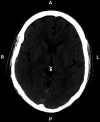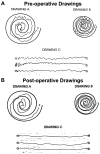Magnetic resonance imaging-guided focused ultrasound thalamotomy for essential tremor in a patient with von Willebrand disease: perioperative optimization for patients with coagulopathies. Illustrative case
- PMID: 38857545
- PMCID: PMC11170030
- DOI: 10.3171/CASE23766
Magnetic resonance imaging-guided focused ultrasound thalamotomy for essential tremor in a patient with von Willebrand disease: perioperative optimization for patients with coagulopathies. Illustrative case
Abstract
Background: Essential tremor (ET) is one of the most common movement disorders worldwide. In medically refractory ET, deep brain stimulation (DBS) of the ventral intermediate nucleus of the thalamus is the current standard of care. However, DBS carries an inherent 2% to 3% risk of hemorrhage, a risk that can be much higher in patients with concomitant coagulopathy. Magnetic resonance imaging-guided focused ultrasound (MRgFUS) thalamotomy is a surgical alternative that is highly effective in treating ET, with no reports of intracranial hemorrhage to date.
Observations: This is the first documented case of successful MRgFUS thalamotomy in a patient with von Willebrand disease (VWD). A 60-year-old left-handed male had medically refractory ET, VWD type 2B, and a family history of clinically significant hemorrhage after DBS. He underwent right-sided MRgFUS thalamotomy and received a perioperative course of VONVENDI (recombinant von Willebrand factor) to ensure appropriate hemostasis. Postprocedure imaging confirmed a focal lesion in the right thalamus without evidence of hemorrhage. The patient reported 90% improvement of his left-hand tremor and significant improvement in his quality of life without obvious side effects.
Lessons: MRgFUS thalamotomy with peri- and postoperative hematological management is a promising alternative to DBS for patients with underlying coagulopathies.
Keywords: case report; coagulation; essential tremor; focused ultrasound; von Willebrand disease.
Figures




References
Grants and funding
LinkOut - more resources
Full Text Sources

